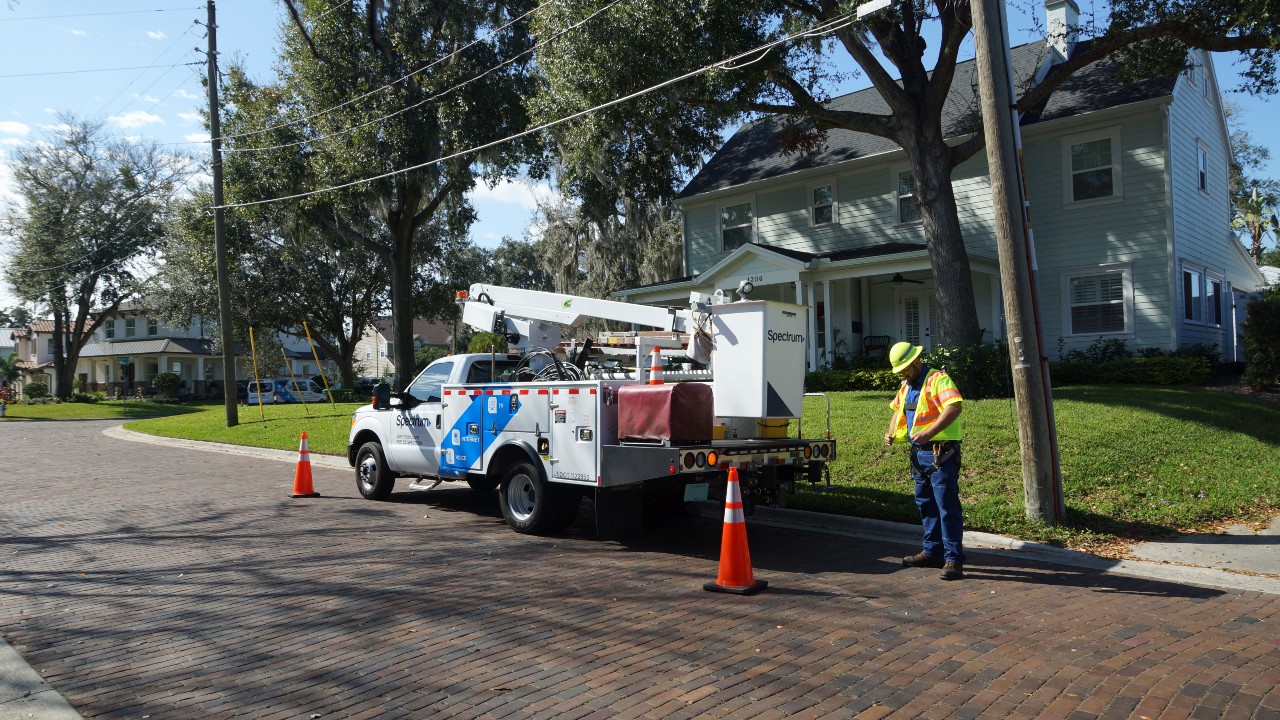High-split network upgrades are “the more up and coming expenditure in parallel with DOCSIS 4.0” as Charter looks toward future capex plans, said Charter CFO Chris Winfrey on a virtual investor conference webcast today.
Winfrey also noted that Charter believes some network upgrades could involve a fiber overlay.
“As we are moving into DOCSIS 4.0, there may be parts of our existing network… to do a fiber overlay in a similarly attractive way to how we can do DOCSIS 4.0.”
DOCSIS 4.0, the latest generation of cable industry broadband standards, is designed to support speeds up to 10 Gbps.
DOCSIS 3.1 Runway
Asked about capex plans, Winfrey said, “Today we’re doing a significant amount of physical and virtual node splits except we’re investing more into DOCSIS 3.1” and there is “significant runway for capacity there.” Node splits reduce the number of customers served from a network node and are one means of boosting the speeds that a broadband network can support.
He added that “we’re converting and will continue to convert into an MPEG-4 environment, so we reclaim bandwidth from our video network and reallocate it [to broadband] all within the context of DOCSIS 3.1”
Additionally, he said, “we will invest in high-split in markets where we think it’s attractive to do so and maybe as a bridge to us transitioning to DOCSIS 4.0.”
Charter High-Split Upgrades
High-split upgrades are designed to increase the broadband speeds that cable operators can provide, particularly on the upstream path, by devoting a greater portion of an operator’s hybrid fiber coax infrastructure to the upstream path. This is accomplished using diplex filters.
As the Society of Cable Telecommunications Engineers webpage explains, today’s high-split architectures use the portion of the link between 5 MHz and 204 MHz for upstream communications, while the portion of the link devoted to downstream communications begins at 258 MHz and may go as high as 1 GHz or higher.
Between node splits, high splits, DOCSIS 4.0 and fiber, Charter has “a variety of technologies and tools available to us and the cadence of that will be dictated based on competition and product needs,” Winfrey noted.
One question that has yet to be answered is “how far do we invest in high-split before we flip the switch to DOCSIS 4.0?” he said.
And while Charter traditionally has used fiber-to-the-home only for green field installations, including most of the company’s rural broadband deployments, that could change moving forward, as Winfrey indicated that the company sees fiber broadband as a possible alternative to DOCSIS 4.0 in some cases.
The overall goal, Winfrey said, is “a capital efficient approach to upgrading the network.”
Winfrey made his remarks at the Bank of America 2021 Media, Communications & Entertainment Conference.
